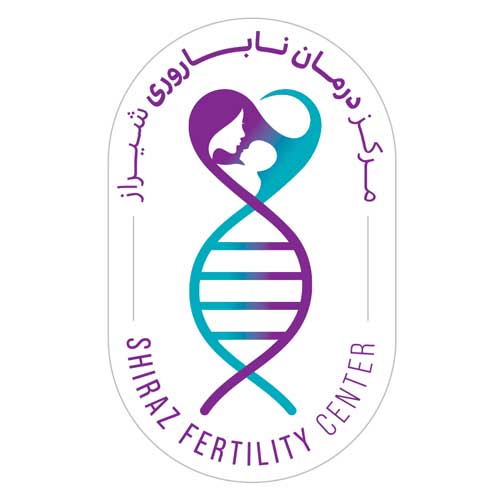Introduction to the Infertility Treatment Department
Shiraz Fertility Center
The infertility treatment department of Shiraz Infertility Treatment Center consists of the top gynecologists and infertility specialists. The use of assisted reproductive technologies as a treatment for infertility has increased significantly, especially in developed countries. To learn more about how the infertility treatment department of Shiraz Infertility Treatment Center works, please stay with us.

A general introduction to intrauterine insemination (IUI) as an infertility treatment
IUI is an effective, affordable, and easy-to-learn treatment for women with at least one open fallopian tube. Compared to IVF, IUI has significantly fewer side effects, such as ovarian hyperstimulation syndrome and multiple pregnancies. IUI can be easily performed in all hospitals, even with minimal equipment. Intrauterine insemination of sperm involves depositing sperm, prepared using special techniques, into the uterine cavity at the time of ovulation. IUI can be performed in a natural cycle or stimulated cycles. Evidence suggests that IUI in stimulated cycles using anti-estrogen drugs such as clomiphene or low-dose gonadotropin is feasible. Researchers have reported pregnancy rates with IUI in stimulated cycles between 10 and 21 percent.
Indications for IUI
Intrauterine insemination (IUI) can be used to treat infertility in cases where the cause is either male or female factors. For women, IUI is indicated for conditions such as chronic ovulation disorders (e.g., polycystic ovary syndrome), anatomical abnormalities of the vagina or cervix, moderate endometriosis, and sexual disorders like vaginismus. In men, IUI is commonly used to treat mild to moderate sperm abnormalities. Other male factors suitable for IUI include anatomical defects of the male reproductive organ (e.g., hypospadias), sexual and ejaculatory disorders, retrograde ejaculation, and immunological factors. Additionally, IUI can be considered for couples with a combination of male and female infertility factors or for unexplained infertility.
Pre-IUI diagnostic evaluation
Diagnostic evaluation of a couple before intrauterine insemination (IUI) should be limited to tests that help predict the effectiveness of IUI. Generally, the most important indications for IUI are moderate semen abnormalities and unexplained long-term infertility. The woman’s age and the duration of infertility are the most important prognostic factors for IUI outcomes, and no tests are needed to determine these. The initial evaluation of the male partner should be limited to semen analysis, and if this analysis is normal, further evaluation is usually not performed.
A semen analysis is considered normal if it meets the 2010 WHO criteria. These criteria include a volume greater than 1.5 mL, a concentration greater than 15 million sperm per mL, a total sperm count greater than 39 million, and a progressive motility of greater than 40% with a normal morphology of greater than 4%. It’s important to note that semen quality in a man can vary significantly over time. Therefore, if the first semen analysis is abnormal, a second analysis is necessary.
During the evaluation of infertility, a complete medical history should be obtained from both partners, and a thorough physical examination should be performed on the woman. All women should undergo a gynecological examination and often an ultrasound as part of the routine diagnostic evaluation of infertility. Ultrasound may identify ovarian pathology, uterine anomalies, uterine masses, or hydrosalpinx in some women. For IUI to be successful, the fallopian tubes must be open. To evaluate the tubes, hysterosalpingography (HSG) and diagnostic laparoscopy (DL) are commonly used. Hysterosalpingography is the first-line test, and diagnostic laparoscopy is the reference test if any problems are found on HSG. Currently, it is recommended that hysterosalpingography, IUI, or sonohysterosalpingography be performed for patients if planned. If tubal pathology is found on HSG or sonohysterosalpingography, diagnostic laparoscopy should be performed for a more accurate evaluation.
In summary, for pre-IUI evaluation, a comprehensive history of female factors is necessary, including the duration of infertility, menstrual cycle, and assessment of the risk of tubal pathology. Additionally, semen analysis should be considered from the beginning. However, routine assessment of TSH and prolactin is essential before any treatment. On the other hand, although tubal tests are often performed routinely, they have limited value in the absence of risk factors for tubal pathology.
When is the right time to perform IUI?
Infertility is defined as the inability to conceive after one year of unprotected sexual intercourse. Approximately 85-90% of young, healthy couples conceive within one year, often within six months, of unprotected intercourse. The remaining 10-15% of couples are considered infertile or subfertile. Basic fertility evaluation typically begins after one year of unprotected intercourse for couples with no known medical issues. However, if there are any risk factors for infertility or if the couple is over 35 years old, this evaluation may begin after six months of unprotected intercourse or at the first visit.
Among infertile couples visiting gynecologists, cervical factors account for 5% of cases, mild male infertility for 35%, severe male infertility for 5%, and other causes of infertility for 35%. In 20% of couples, no cause of infertility is found, which is termed unexplained infertility. In infertile couples with cervical factors, male factors, or unexplained infertility, intrauterine insemination or IUI is often the first step in treatment. In an IUI cycle, semen is prepared in the laboratory, and motile sperm is concentrated in a small volume (approximately 0.5 ml). This concentrated sperm is then inseminated into the uterine cavity using a catheter around the time of ovulation.
The following indications are often cited for IUI with the male partner’s sperm:
- Cervical factors
- Endometriosis (mild to moderate)
- Male infertility
- Sexual dysfunction (ejaculatory disorders, anatomical, neurological, and psychological disorders)
- Unexplained infertility
- Ovarian dysfunction
IUI is a relatively simple, non-invasive, and cost-effective option for couples with open tubes and an adequate number of motile sperm after sperm preparation. When IUI is suggested or considered, 3 to 9 IUI cycles can lead to a cumulative pregnancy rate of 25-50% and prevent premature IVF. IUI is not usually recommended in a natural cycle and perhaps the only indications for it can be listed as infertile couples with confirmed cervical factors or ejaculation disorders. In infertile couples with moderate male factors (defined and identified by 10 million > TMSC and 800,000 < TMSC after sperm preparation), IUI can be used. IUI with controlled ovarian stimulation should be offered to couples with unexplained infertility, mild endometriosis, and mild male factors.
Explanation of the treatment process by Dr. Fatemeh Haghighi, a gynecologist with a subspecialty fellowship in infertility
Grouping of patients referred to the Shiraz Infertility Treatment Center
I talked to you about the services we provide in this center. We have several groups of patients in this center:
- Patients referred for infertility problems
- Patients referred for gender selection and health determination for all genetic diseases
- General women’s health problems
- Visits for pregnant mothers
- HPV cervical cancer screening
The clinic's procedure is as follows: Patients visit the clinic on days 2-5 of their menstrual cycle for an ultrasound to assess ovarian reserve. Necessary tests are also requested to evaluate ovarian reserve. For patients seeking PGD, genetic counseling is requested for patients with a history of recurrent miscarriages, a history of genetic disease, and consanguineous marriage. After the initial evaluation, a physical examination, medical history, and laboratory tests are conducted, and the necessary and effective treatment is considered and started.
The treatment process involves prescribing medications to stimulate the ovaries. The patient starts taking these medications on the 2nd day of their menstrual cycle as per the schedule provided by our staff. The medications are administered through subcutaneous or intramuscular injections. On the 6th and 9th days of the cycle, the patient returns for an ultrasound to monitor ovarian response to the medication and determine the egg retrieval day. It's important to note that ovarian response varies among individuals, and therefore, the egg retrieval day may also vary. On the scheduled day of egg retrieval, the patient, along with their partner, should come to the clinic with the necessary tests and documents. The patient should be fasting on the day of the procedure.
We can provide you with a brief explanation of the egg retrieval procedure. This procedure is essentially an outpatient procedure. The patient receives a brief anesthesia, and the egg retrieval is performed under ultrasound guidance through the vagina. The procedure takes approximately 10 minutes. After the procedure, the patient is transferred to the recovery room and nursing unit, and is discharged after 2 hours. Regarding ovarian response and the number of eggs, it should be noted that the ovarian response varies among individuals, and naturally, the number of eggs will also vary. No two patients will have the same number of eggs.
The transfer process usually goes as follows: In most patients, due to the use of prescribed medication and unsuitable conditions of the uterine lining, we prefer to freeze the embryo and transfer it in two cycles later. However, depending on the patient's condition, we may transfer the embryo fresh. The number of embryos transferred is determined by the embryologist based on the quality of the embryos, the mother's age, and the condition of the uterus.
For PGD, we perform the procedure for the following groups of patients:
- Patients where both parents are carriers of a specific gene mutation, such as thalassemia, hemophilia, and all genetic diseases.
- Patients with recurrent miscarriages or repeated IVF failures due to chromosomal abnormalities.
- The next case is sex selection, where we can definitively determine the sex of the embryo before implantation in the uterus using genetic methods.
Regarding the definition of recurrent miscarriage: A woman who has experienced two or more consecutive spontaneous miscarriages is considered to have recurrent miscarriages. Additionally, if a woman has experienced more than three miscarriages, it also falls under the definition of recurrent miscarriages.
Definition of repeated implantation failure: More than 3 unsuccessful transfers of good-quality embryos.
Regarding recurrent miscarriages, it is recommended that the miscarried product be sent to a genetics laboratory for genetic testing. The conditions for transferring the fetus to the laboratory are as follows: it should be placed in a plastic container. If it is over 13 weeks, the container should contain saline solution, and if it is under 13 weeks, the container should be empty. The fetus should be stored in a refrigerator until it is sent to the laboratory. The fetus can be stored in the refrigerator for a maximum of 3 days.
Definition of PGD: Genetic testing of a 3- or 5-day-old embryo before implantation in the uterus.
The next group of patients we encounter in the clinic are those who undergo egg freezing due to reasons such as upcoming chemotherapy or radiation therapy, or those with a risk of premature ovarian failure, like those with a family history of early menopause. This process also applies to sperm, such as individuals who need to undergo cancer treatment or those with high-risk occupations involving exposure to toxins and chemicals, who can freeze their sperm.
GYN: Patients who come due to irregular menstrual cycles or hormonal problems.
Our other patients are pregnant women. In fact, in this center, pregnant women are visited throughout their 9-month pregnancy, along with specialized genetic screening.
